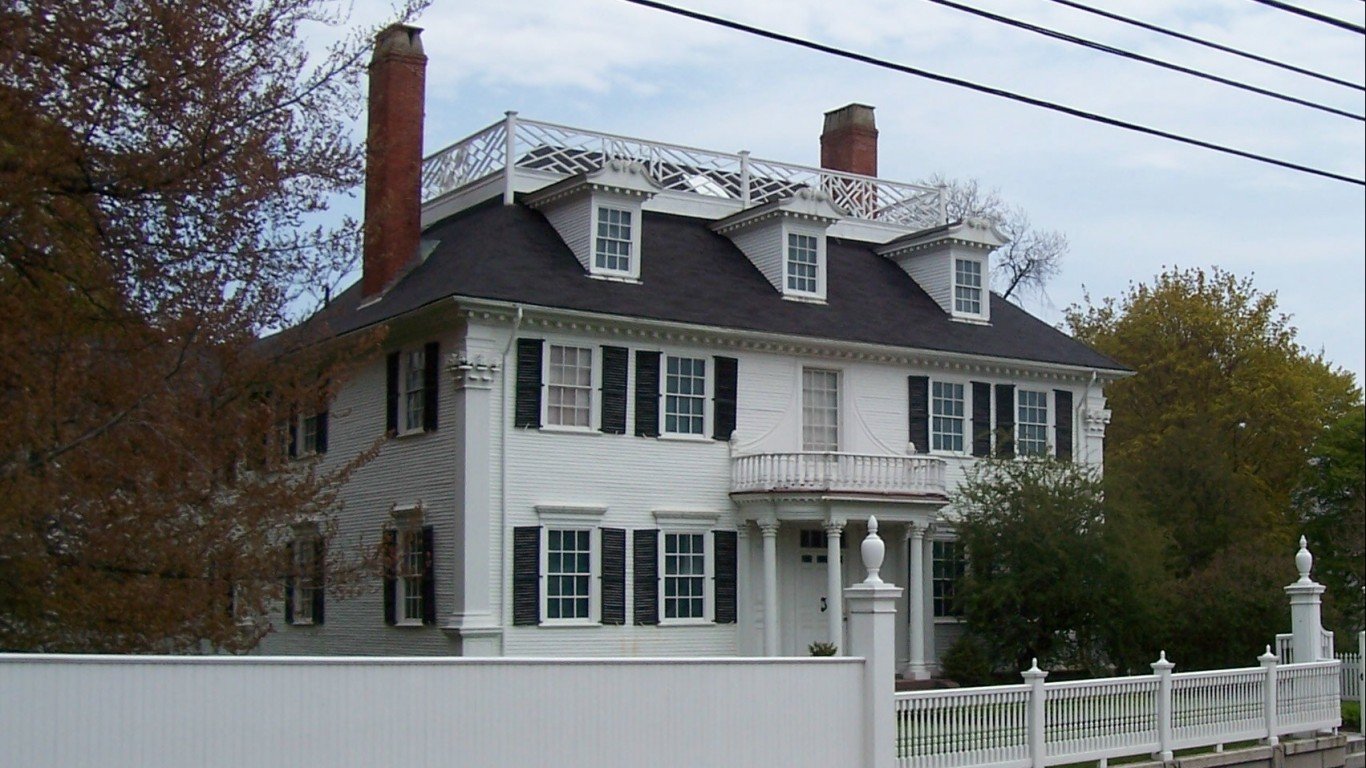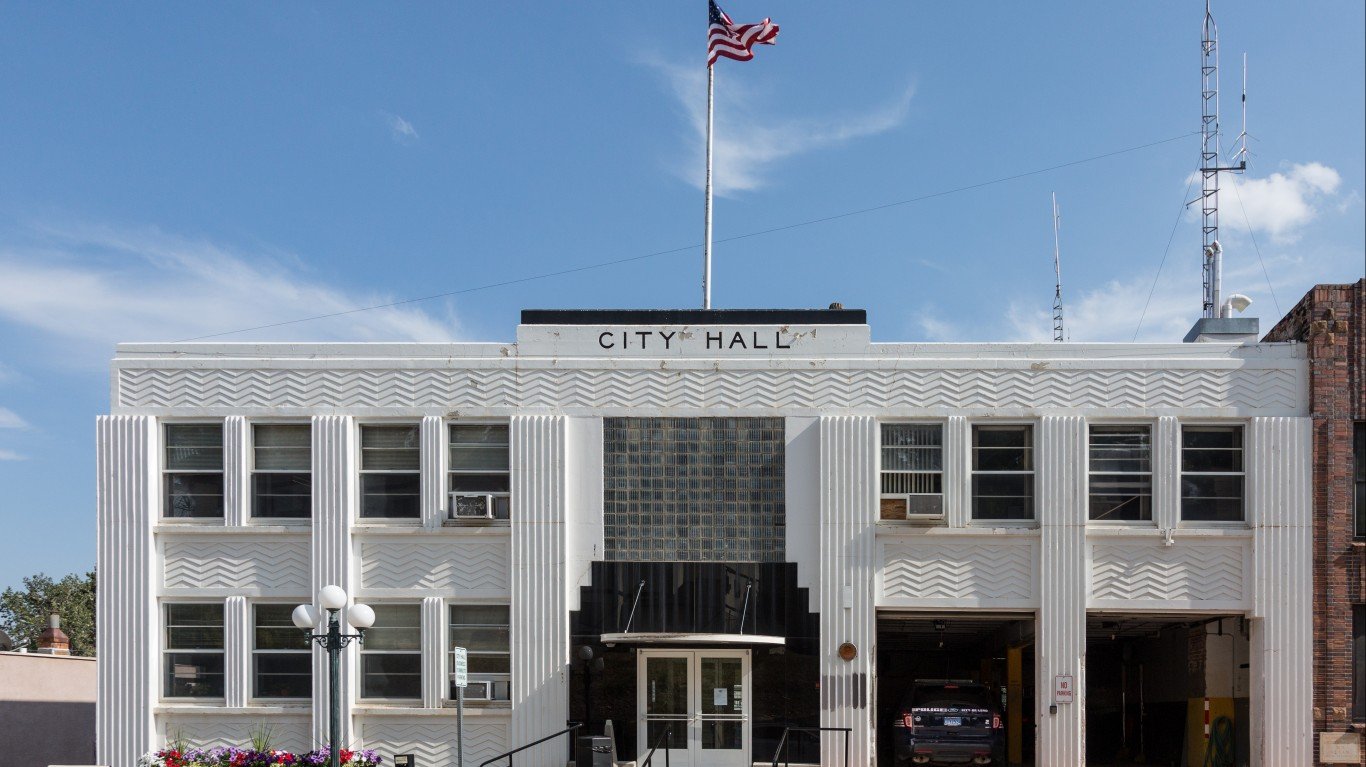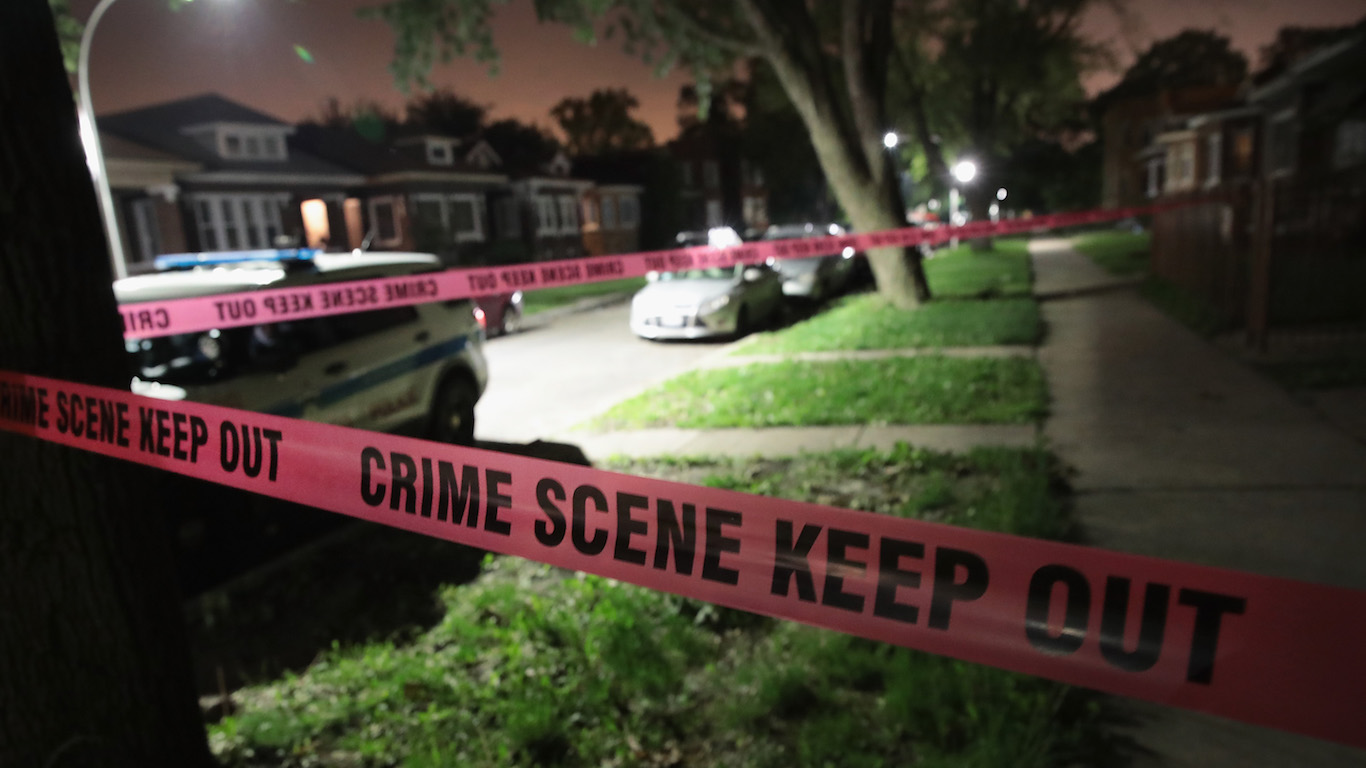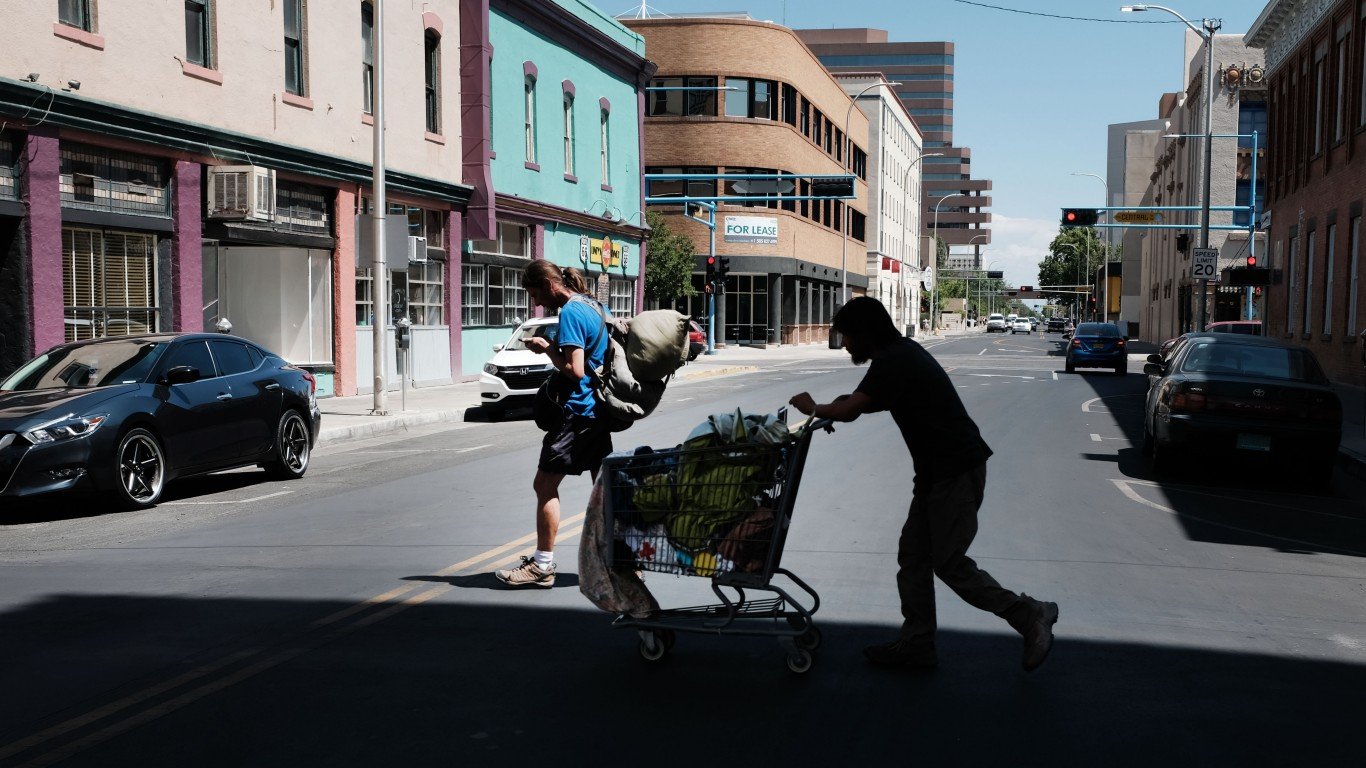

Each of the 50 states is a product of its own unique history, laws, culture, and geography. Indeed, no two states are exactly alike, and many of the attributes that make each state unique are a point of pride.
Across hundreds of measures related to governance, safety, personal finance, state finance, industrial output, environmental sustainability, climate, and more — every state has at least one area in which it performs worse than most states. At the same time, every state also has at least one area in which it excels.
24/7 Wall St. reviewed a range of data sets and state facts to identify the best statistics about every state. In compiling this list, we prioritized a diversity of measures. Data came from sources including the U.S. Census Bureau, the Bureau of Labor Statistics, and the FBI.
In many cases, a state’s best statistic is largely a product of governmental priorities. These statistics include measures like a well-funded public pension system and substantial investment in education. While not necessarily praise of current state government leadership, measures such as these can be indicative of good state management — past or present. Here is a look at the best- and worst-run states.
Click here to see the best statistic about your state
Click here to see the worst statistics about your state

Alabama
Statistic: 7,565 jobs created by foreign investment
In the latest Global Location Trends report by IBM-Plant Location International, Alabama ranked first in the country for new job creation from direct foreign investment in 2018.
[in-text-ad]
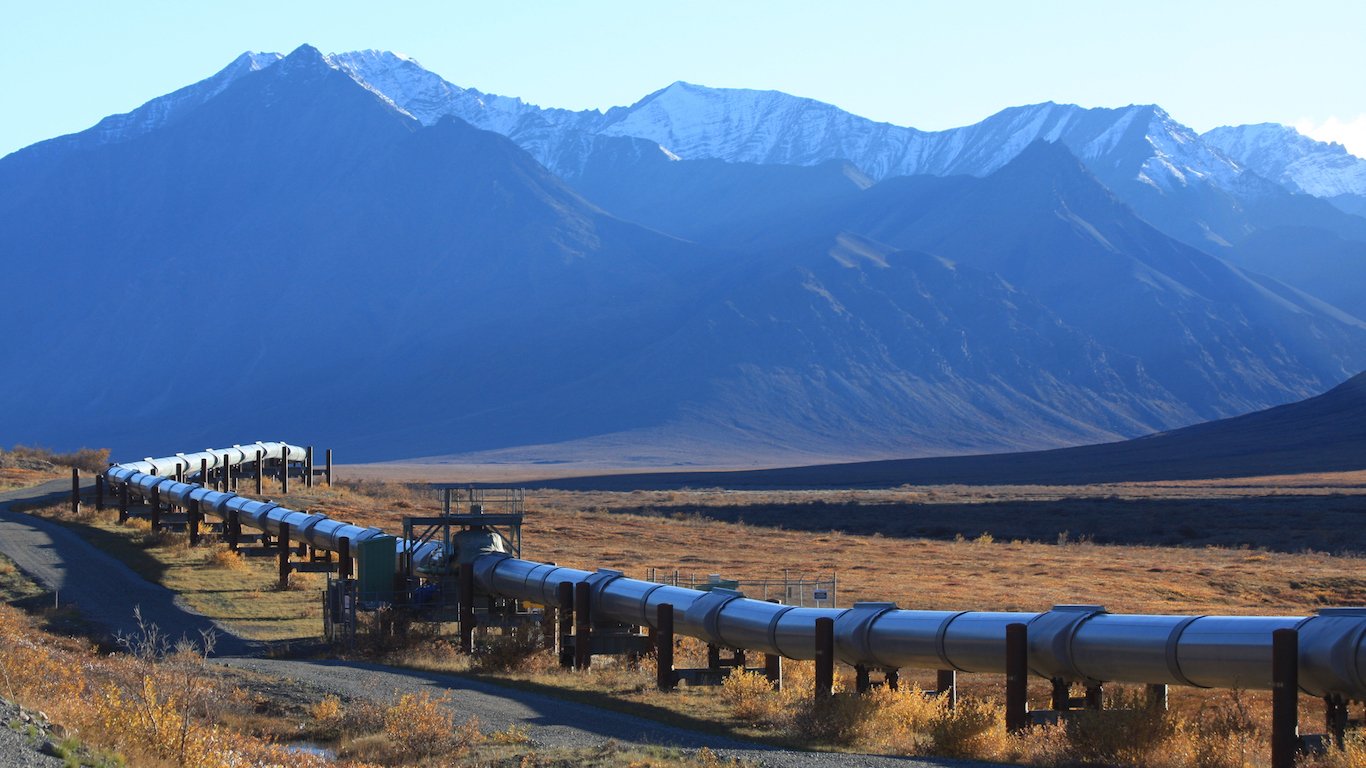
Alaska
Statistic: $1,606 per resident
The oil-rich state distributes a permanent dividend fund to a bulk of its 737,000 residents, which typically ranges from $1,000 to $2,000 per year. In 2019, each resident received $1,606.

Arizona
Statistic: 3.9% of 65 and over population moved in the past year
Arizona appears to be an increasingly popular state for older Americans. An estimated 3.9% of the senior population of the state moved there in 2018 alone, the most of any state.
Arkansas
Statistic: 49% of U.S. rice production
Arkansas is by far the largest rice producer in the country, with farmers producing over 9 billion pounds per year. The state accounts for nearly half of the country’s total rice production.
[in-text-ad-2]

California
Statistic: $1,954 in venture capital investment per resident
California companies received more in venture capital funding on a per capita basis than any other state. For reference, total VC investment nationwide was equal to only $400 per capita in 2018.

Colorado
Statistic: 21% adult obesity rate
Obesity is a health risk for a number of serious and potentially fatal diseases, and Colorado has the lowest adult obesity rate of any state — well below the 29% national rate
[in-text-ad]

Connecticut
Statistic: $72,213 personal income per capita
Based on personal income per capita, Connecticut is the wealthiest state in the country. Annual personal income per capita in Connecticut is about $20,000 higher than it is nationwide.

Delaware
Statistic: 67.2% of Fortune 500 companies incorporated
Due to a favorable tax and legal climate for businesses, the vast majority of Fortune 500 and publicly traded U.S. companies are incorporated in Delaware.

Florida
Statistic: $3.9 billion annual impact from NASA
Florida’s Kennedy Space Center has been the launch site for most of NASA’s biggest missions in its history. NASA’s operations and the visitor center contributed an estimated $3.9 billion to Florida’s economy in fiscal year 2017.
[in-text-ad-2]

Georgia
Statistic: 15 of the top 100 grossing films
Georgia’s growing film industry continues to make strides, catching up to states like New York and California. In 2017, 15 of the top 100 grossing films in North America were filmed in the state, the most of any state.

Hawaii
Statistic: 82.2 year average life expectancy
The average life expectancy at birth is higher in Hawaii than any other state and over three years longer than the 79.1 year national average.
[in-text-ad]

Idaho
Statistic: 15.1 billion pounds of potatoes
Idaho is famous for its potatoes, and produces about a third of the nation’s potato production every year. In 2017, the state produced over 15 billion pounds of potatoes.
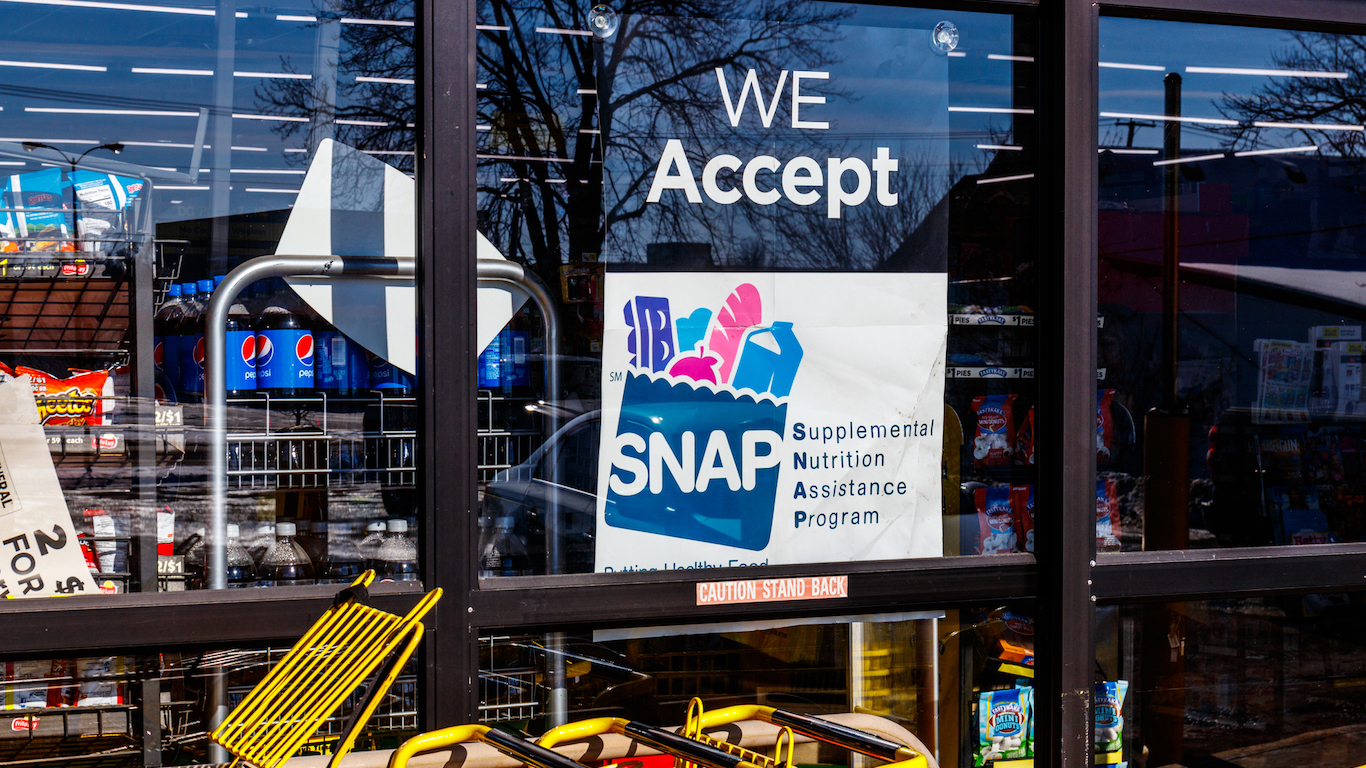
Illinois
Statistic: 97.5% of eligible individuals receiving SNAP benefits
Those who need food assistance are the most likely to receive it in Illinois, with 97.5% of eligible individuals receiving SNAP (Supplemental Nutrition Assistance Program) benefits in fiscal 2015, the most of any state.

Indiana
Statistic: Avg. annual homeownership costs 24.1% of income
Homeownership is relatively affordable in Indiana. State residents with a mortgage pay less in housing costs as a share of their annual income on average than in any other state.
[in-text-ad-2]

Iowa
Statistic: 2.9 physically unhealthy days per month
Based on CDC data, Iowa is the only state in the country where adults report an average of fewer than three physically unhealthy days per month. In some states, the average is over 5 days per month.
Kansas
Statistic: 467 million bushels of wheat
Kansas produces more wheat than any other state — about 134 million more bushels than South Dakota, the second largest producer of wheat.
[in-text-ad]

Kentucky
Statistic: $6.5 billion in economic activity from the horse industry
Kentucky’s horse breeding industry is central to the state’s identity as well as its economy. One industry report found that the state’s equine industry generates $6.5 billion in annual economic activity and is tied to over 60,000 jobs.

Louisiana
Statistic: 7.71 cents per kWh
Louisiana has the least expensive electricity in the country, costing an average of just 7.71 cents per kilowatt-hour. For comparison, in Hawaii, the most expensive state, electricity costs 29.18 cents per kWh on average.
Maine
Statistic: 112.1 violent crimes per 100,000
Maine has by far the lowest violent crime rate in the country, at just 112.1 incidents per 100,000 residents, according to the 2018 FBI’s Uniform Crime Reporting program. The state with the next lowest rate is Vermont, at 172.0 violent crimes per 100,000. The national average is nearly 370 per 100,000.
[in-text-ad-2]
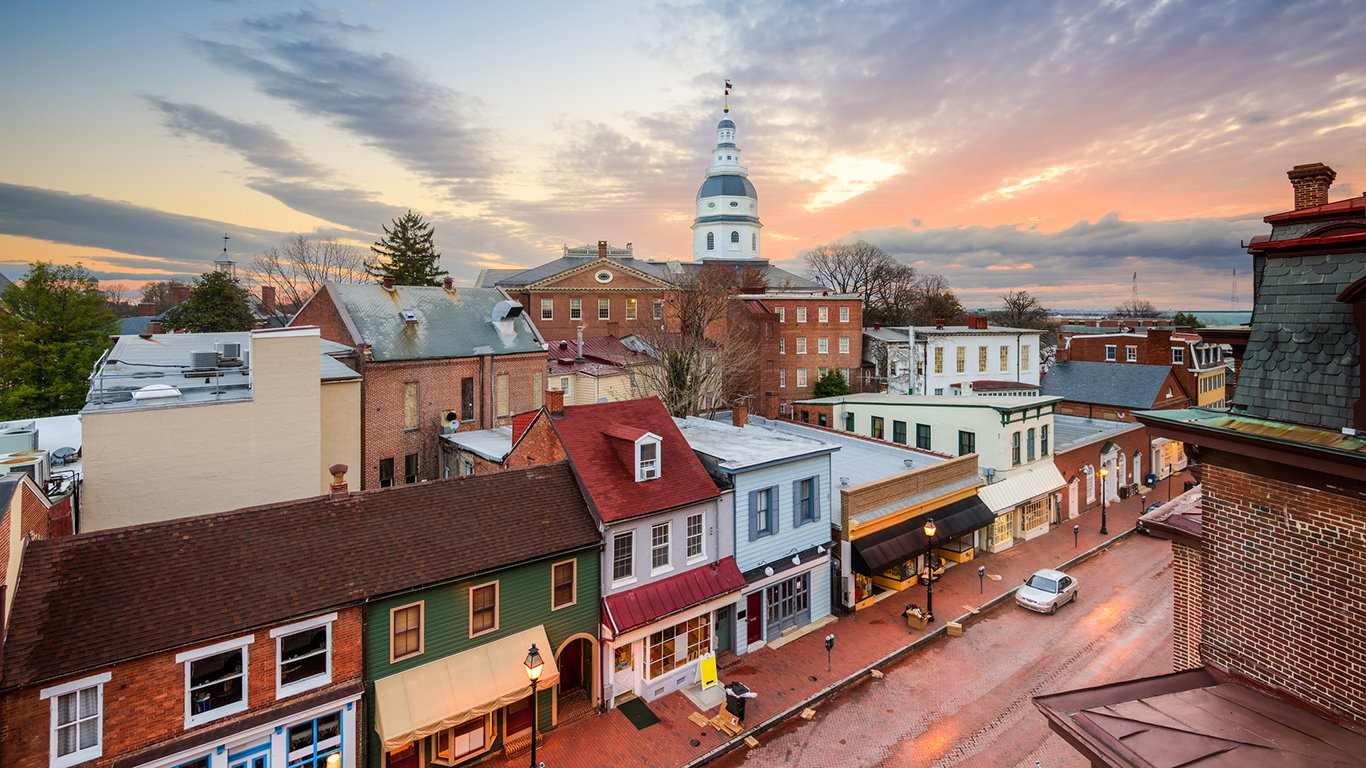
Maryland
Statistic: $83,242 median household income
Maryland has the wealthiest households in the country. The state’s median household income in 2018 of $83,242 was over $21,000 higher than the national median.
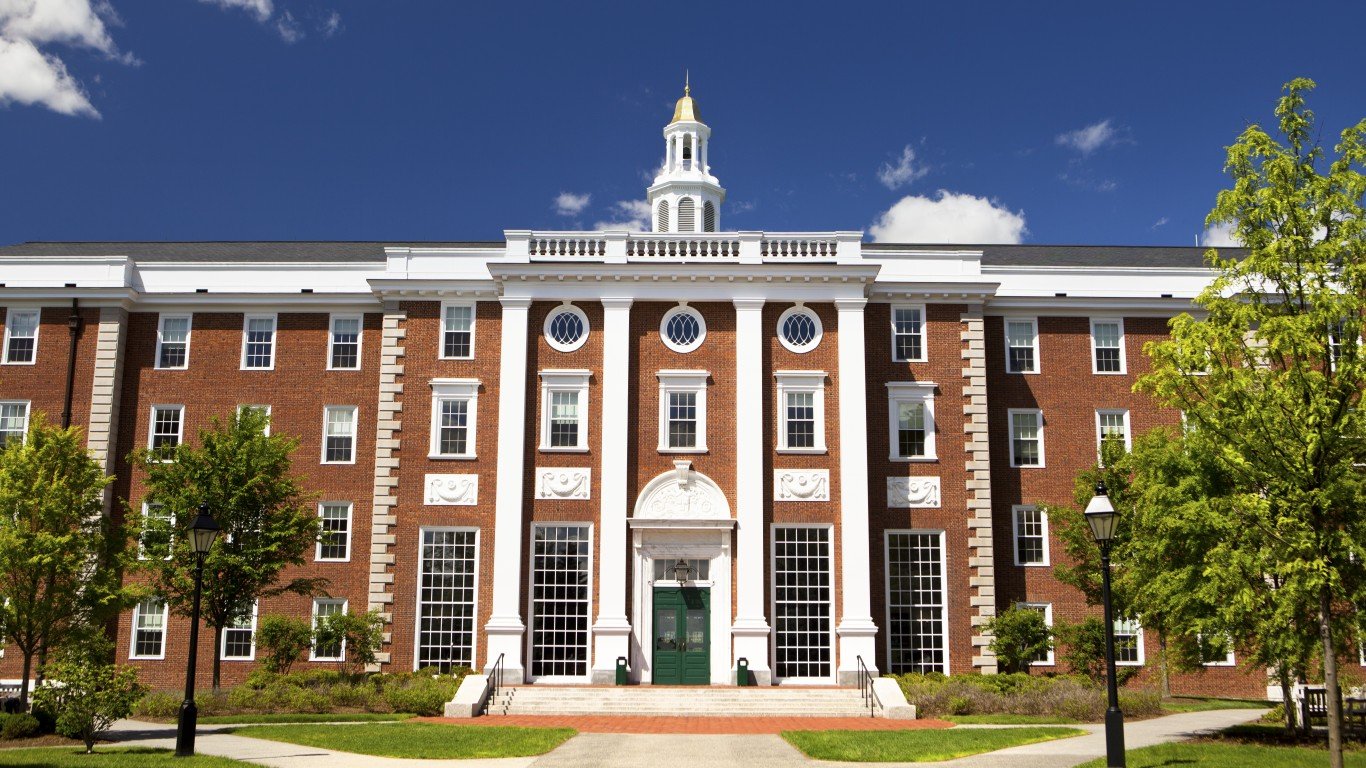
Massachusetts
Statistic: 44.5% adult bachelor’s attainment rate
Home to a number of the nation’s top colleges and universities, Massachusetts has the most highly educated adult population in the country. Of all residents 25 or older, 44.5% have at least a bachelor’s degree and 20.1% have a graduate or professional degree, each the largest share of any state.
[in-text-ad]
Michigan
Statistic: Borders 4 great lakes
The Great Lakes State borders four of the five Great Lakes — Erie, Huron, Michigan, and Superior — more than any other state.

Minnesota
Statistic: 265.7 per 100,000 residents age-adjusted mortality
Home to the world-renowned Mayo Clinic, Minnesota is one of the healthiest states in the country. The premature age-adjusted annual mortality rate — the rate at which residents under 75 die every year — in the state of 265.7 deaths per 100,000 residents is the lowest of any state.
Mississippi
Statistic: 85.7 cents per dollar
While Mississippi ranks poorly in a number of key statistics, it is the least expensive state to live in. Goods and services in Mississippi cost 14.3% less than the national average prices, according to the Bureau of Economic Analysis.
[in-text-ad-2]
Missouri
Statistic: 369 rural health clinics
Access to medicine can be difficult for rural Americans, who are often the ones most in need of medical care. In Missouri, according to the Kaiser Family Foundation, there are 369 Medicare certified rural health clinics as of 2018, the most of any state.

Montana
Statistic: 64.8% of workers employed in small businesses
Small business is thriving in Montana. The state boasts the largest share of employment in small businesses in the country, well above the 47.3% national share.
[in-text-ad]

Nebraska
Statistic: 7 drug overdose deaths per 100,000 residents
Nebraska had the fewest annual drug overdose deaths, on average, between 2015 and 2017, at 7 per 100,000 residents, compared to a national rate of 19 drug overdose deaths per 100,000.

Nevada
Statistic: 59 concerts per 100,000 residents in Las Vegas
Las Vegas — by far the most populous city in Nevada — is by many measures one of the entertainment capitals of the country. According to ticket search engine Seatgeek, the city had nearly 60 concerts per 100,000 area residents in 2018, close to four times the second place metropolitan area, Nashville.
New Hampshire
Statistic: 7.6% of the population live below the poverty line
New Hampshire has the lowest poverty rate of any state. For reference, the national poverty rate stands at 13.1%, according to the U.S. Census Bureau.
[in-text-ad-2]

New Jersey
Statistic: 62.1% of 3 and 4 year olds enrolled in preschool
Preschool has been shown to be an important part of early childhood development, and New Jersey has the highest rate of 3 and 4 year olds enrolled in nursery or preschool, at 62.1%, compared to a national share of 45.7%.
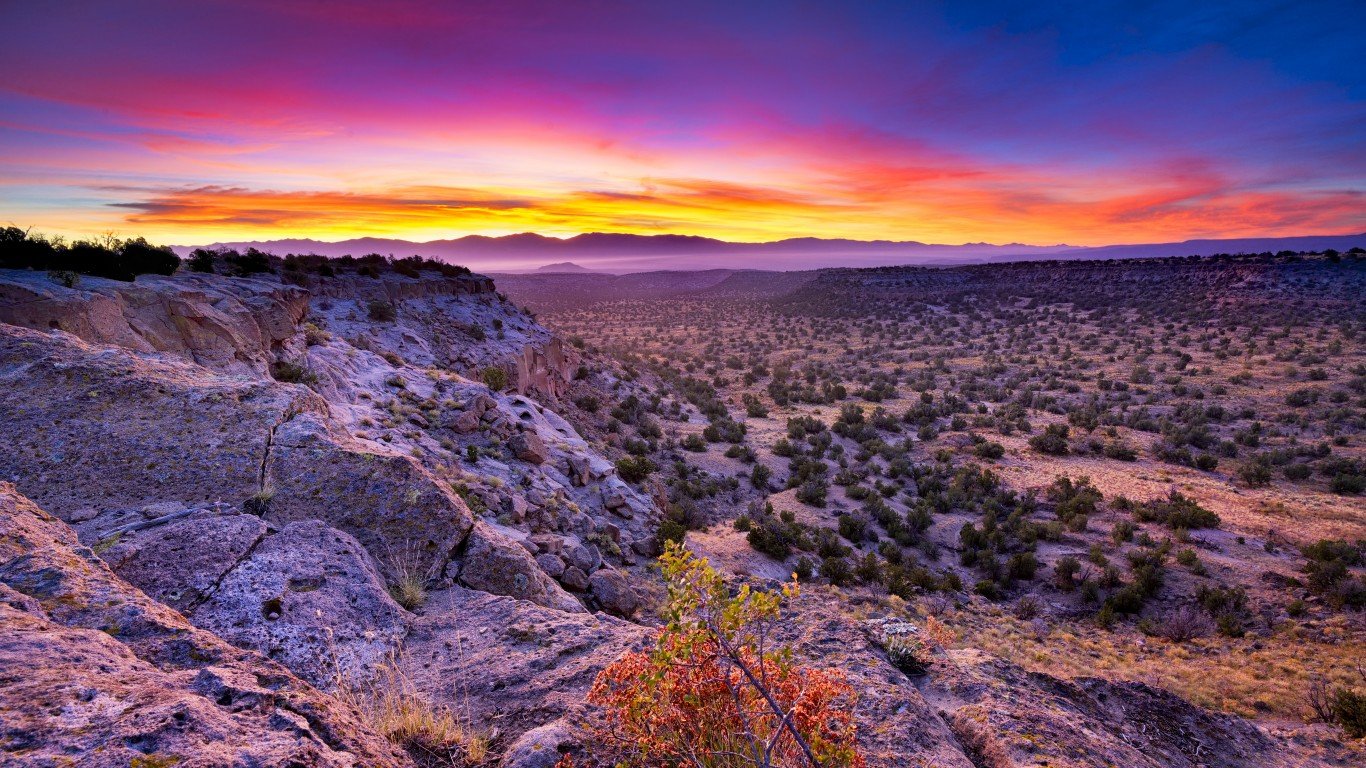
New Mexico
Statistic: 0 hate groups
The Southern Poverty Law Center tracked over 1,000 hate groups in the United States as of 2018. New Mexico was the only state to be home to none of these.
[in-text-ad]
New York
Statistic: 28.0% of workers use public transportation to commute
Public transportation as a whole benefits lower-income residents who cannot afford cars and can be environmentally friendly. In New York State, 28.0% of workers reported using public transportation to commute to work in 2018, the most of any state and well above the national share of 4.9%.

North Carolina
Statistic: 4% tech job growth in 2018
In North Carolina, tech employment grew 4.0%, third fastest of all states and greater than the 2.3% national growth in tech, according to a report by CompTIA, a nonprofit tech trade organization.

North Dakota
Statistic: 260 million BTUs per capita of renewable energy
Although it is known for its shale oil boom, North Dakota also produced more energy from renewable sources on a per capita basis in 2017 than every other state. The state produced nearly 260 million BTUs of renewable energy per capita, compared to a national renewable energy generation of less than 34 million BTUs per capita. Much of that came from the state’s wind energy infrastructure.
[in-text-ad-2]
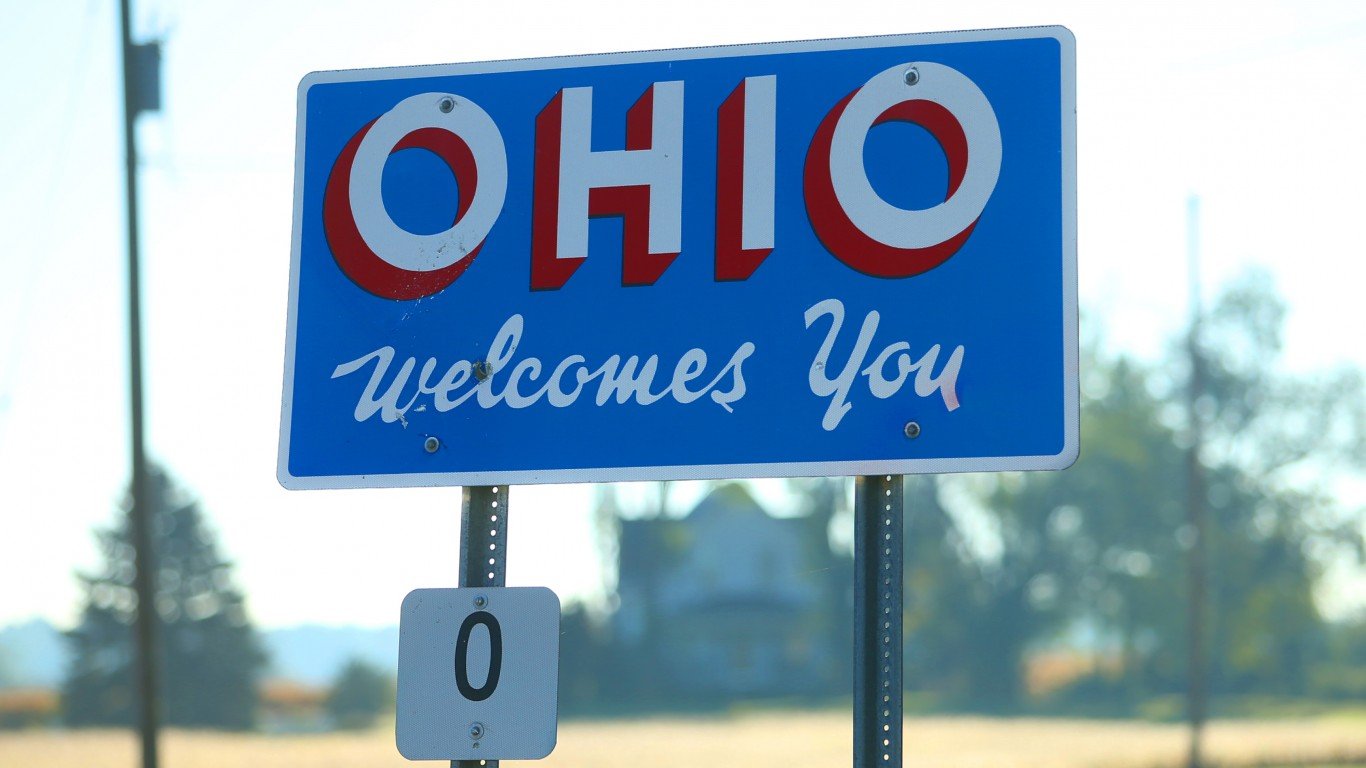
Ohio
Statistic: 7 presidents born in the state
Ohio was the birthplace of seven U.S. presidents, one less than Virginia, which was the birthplace to eight. However, William Henry Harrison, who was born in Virginia, spent much of his life in Ohio.

Oklahoma
Statistic: Lowest residential segregation
Oklahoma has the lowest residential segregation between white and non-white residents, according to County Health Rankings.
[in-text-ad]

Oregon
Statistic: 2% of commuters bicycle to work
Workers in Oregon are more likely to bike to work than those in any other state. For reference, just 0.5% of workers nationwide commute by bicycle.
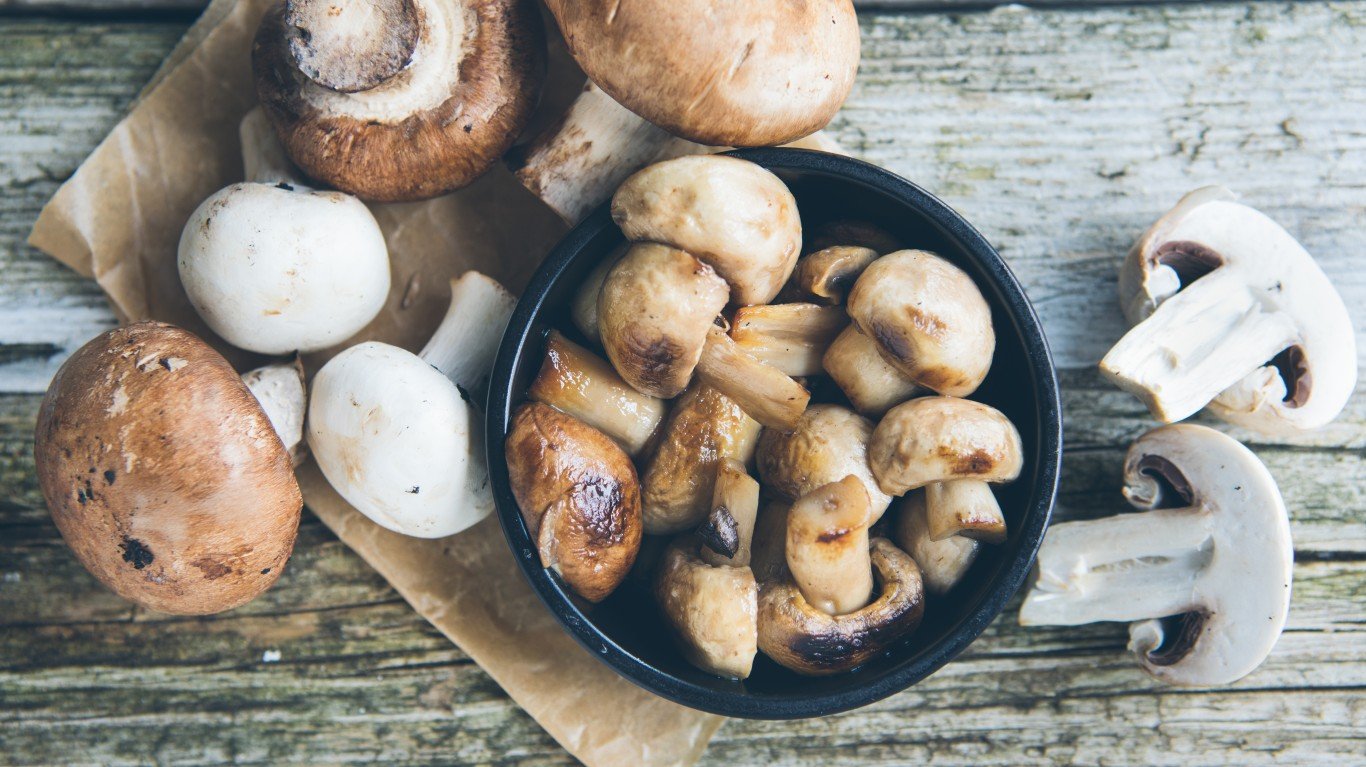
Pennsylvania
Statistic: 68% of nation’s mushrooms
Pennsylvania is the source of much of the nation’s commercial mushroom production. In fact, Kennett Square, Pennsylvania, alone produces almost 70% of all mushrooms grown in the country for harvesting.

Rhode Island
Statistic: 95% of residents have access to places for physical activity
Rhode Island residents are more likely than Americans in any other states to live in close proximity to places like parks or recreation centers.
[in-text-ad-2]
South Carolina
Statistic: 111.8 million BTUs per capita of nuclear energy
South Carolina produced more nuclear energy on a per capita basis than every other state in the country in 2017.
South Dakota
Statistic: 1.4 murders for every 100,000 people
South Dakota has the lowest annual murder rate of any state in the country. For reference, there were 5.0 murders nationwide for every 100,000 people in 2018.
[in-text-ad]

Tennessee
Statistic: 11.4 million visitors
The Great Smoky Mountains National Park was the most visited national park in the country in 2018, with more than 11.4 million visitors. The next most popular national park was the Grand Canyon, with 6.3 million visitors.
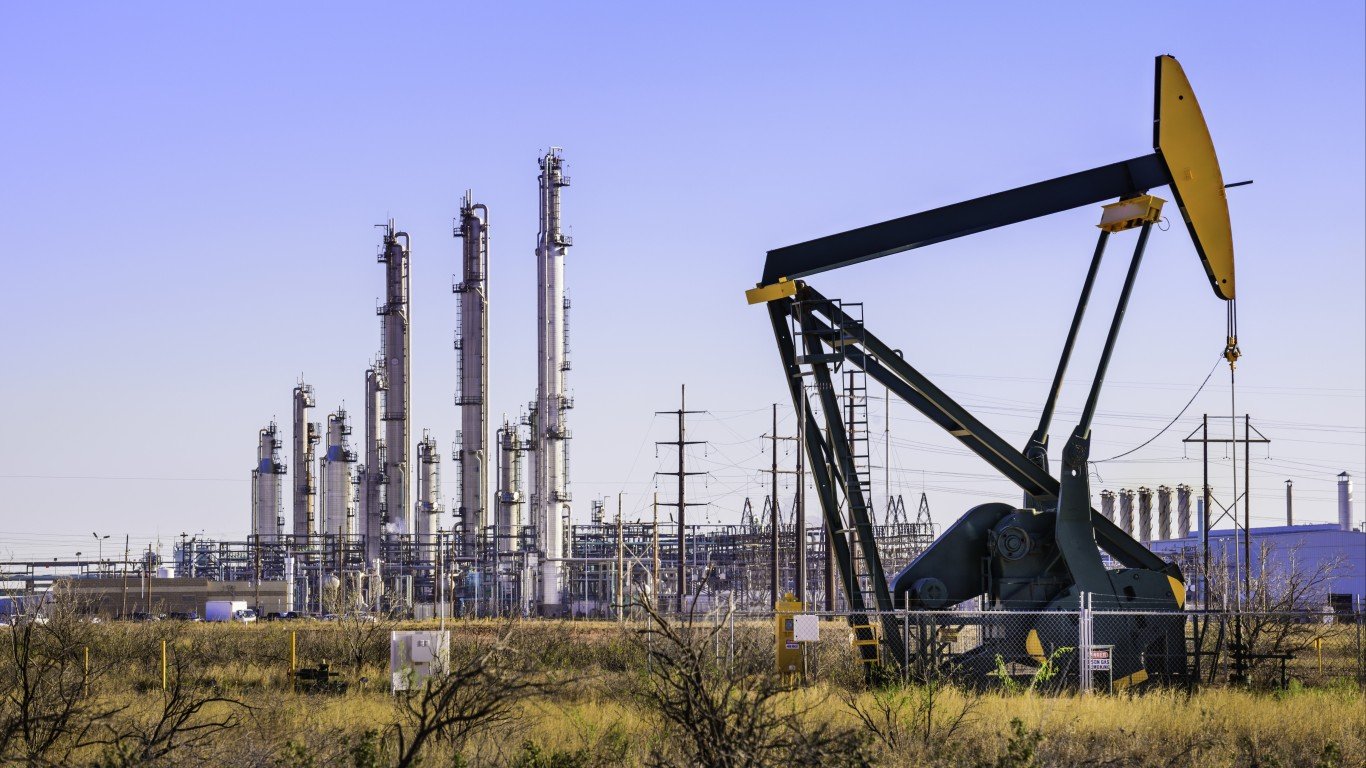
Texas
Statistic: $2.12 for a gallon of gas
Texas has some of the cheapest gasoline in the country, at less than $2.12 a gallon at the time of this writing.

Utah
Statistic: 9.5% of children in poverty
Children are one of the most vulnerable groups to poverty, and 18% of children live below the poverty line nationwide. Utah’s child poverty rate is nearly half the national rate and the lowest in the country.
[in-text-ad-2]

Vermont
Statistic: $20,540 per pupil expenditure, adjusting for regional costs
Vermont spends more on public education per student than any other state in the country, adjusted for regional cost variations. On average, per student spending across all states totalled $12,756 in fiscal 2016.
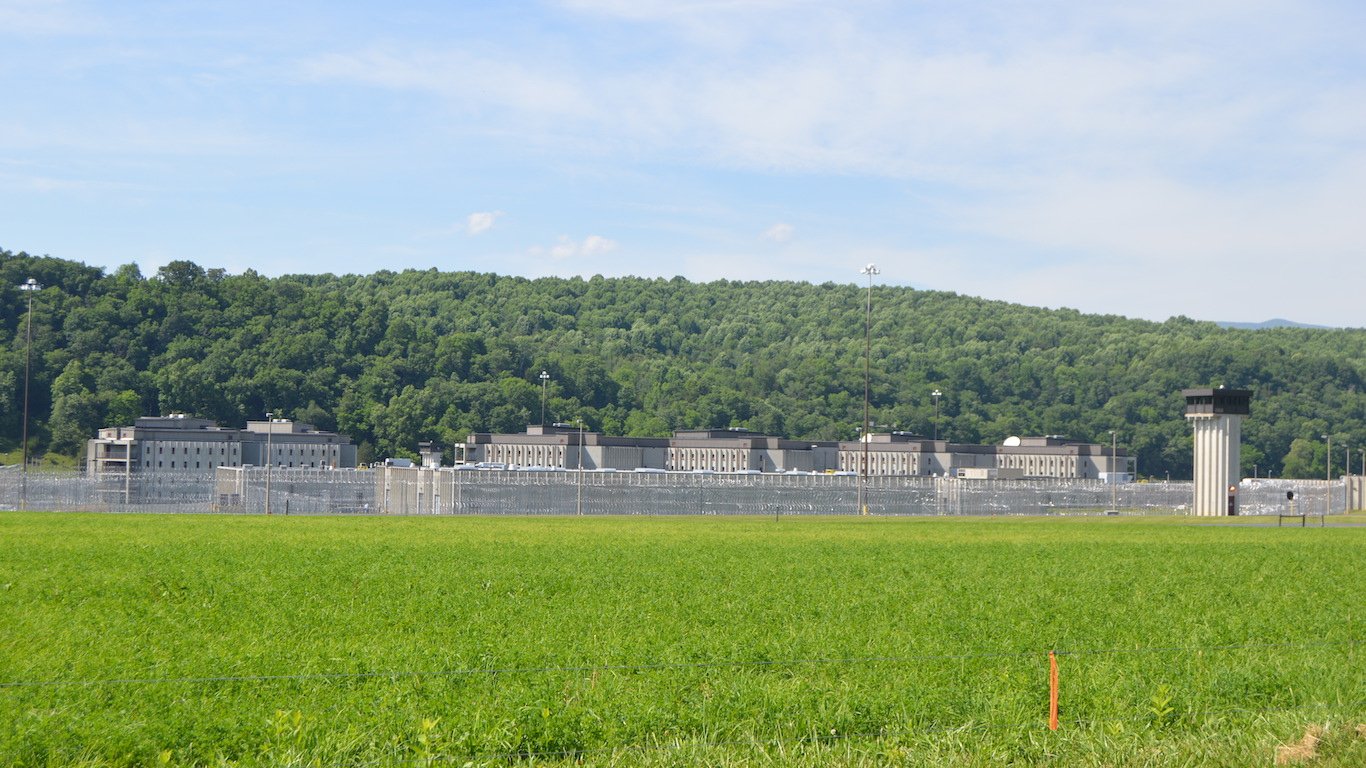
Virginia
Statistic: 23.4% recidivism rate
People who are released from jail or prison in Virginia are less likely to be re-incarcerated than ex-convicts in every other state.
[in-text-ad]

Washington
Statistic: 2.7 fatalities at work for 100,000 workers
Washington has the lowest occupational fatality rate of any state, according to the BLS. It is well below the national rate of 4.4 fatalities at work per 100,000 full-time equivalent workers.
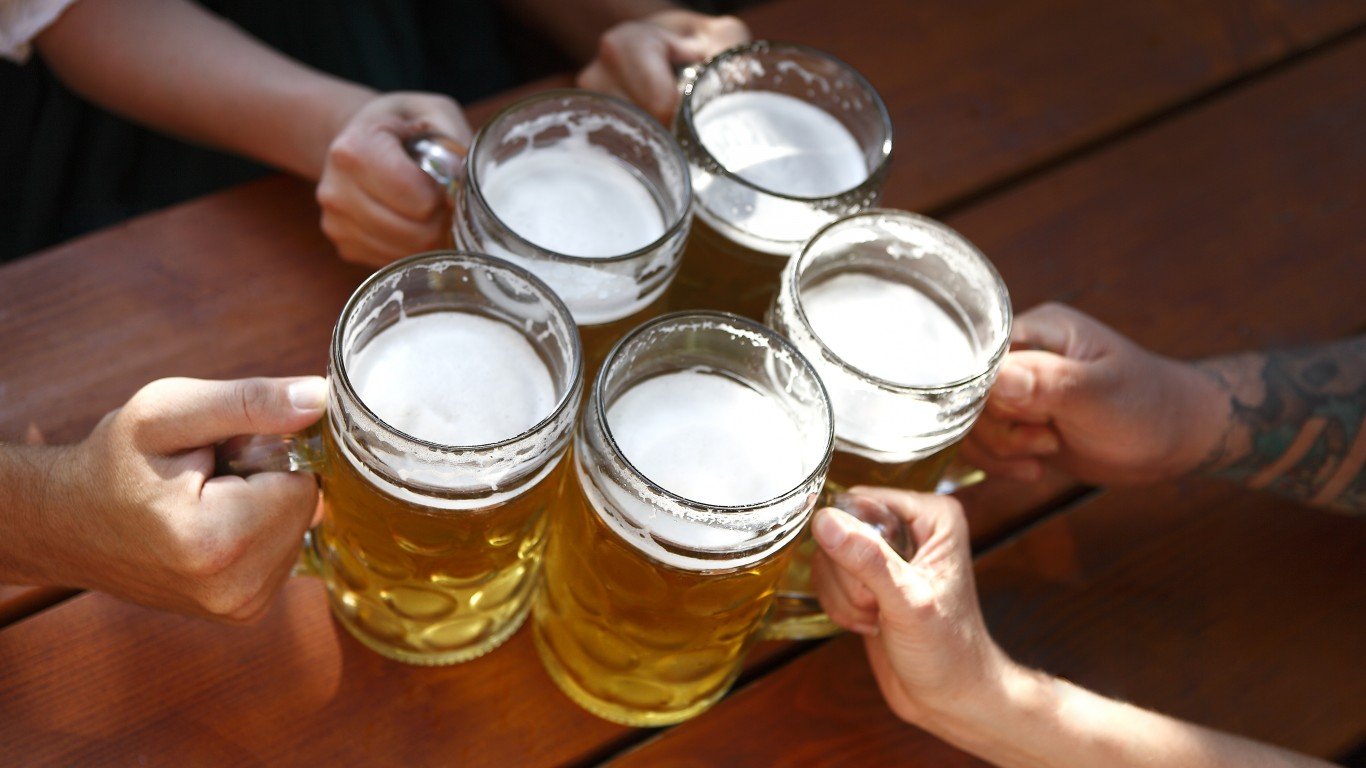
West Virginia
Statistic: 11.9% of adults report excessive drinking
West Virginia has the smallest share of adults who reported drinking excessively in the previous 30 days, at 11.9%, according to the CDC. The national excessive drinking rate is 18.0%.

Wisconsin
Statistic: 102.6% of pension funded
Wisconsin’s pension is the most well funded of any state, with total funds allocated actually exceeding the value of the state’s pension obligations as of fiscal 2017.
[in-text-ad-2]
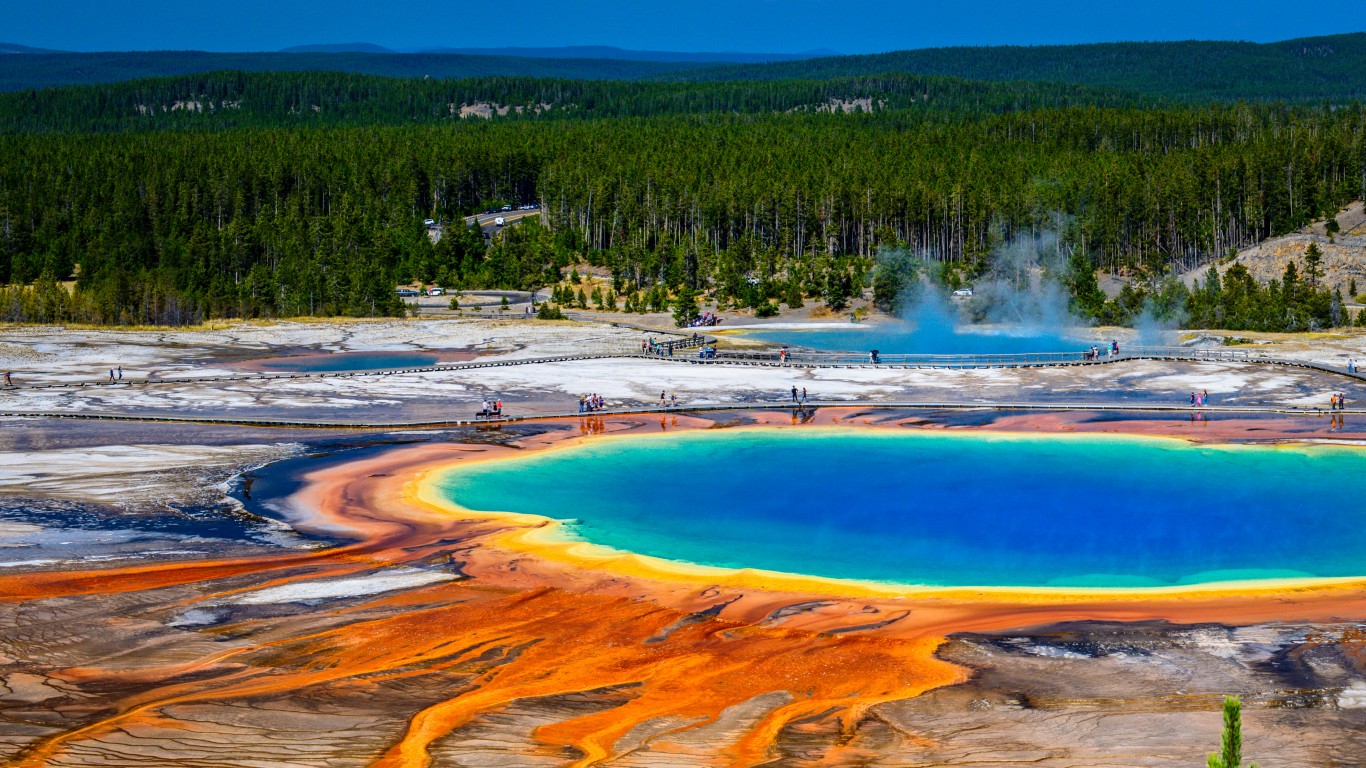
Wyoming
Statistic: 4.1 million visitors per year to Yellowstone National Park
Yellowstone, located primarily in Wyoming, draws in millions of visitors every year and is one of the most popular tourist destinations in the United States.
Essential Tips for Investing: Sponsored
A financial advisor can help you understand the advantages and disadvantages of investment properties. Finding a qualified financial advisor doesn’t have to be hard. SmartAsset’s free tool matches you with up to three financial advisors who serve your area, and you can interview your advisor matches at no cost to decide which one is right for you. If you’re ready to find an advisor who can help you achieve your financial goals, get started now.
Investing in real estate can diversify your portfolio. But expanding your horizons may add additional costs. If you’re an investor looking to minimize expenses, consider checking out online brokerages. They often offer low investment fees, helping you maximize your profit.
Thank you for reading! Have some feedback for us?
Contact the 24/7 Wall St. editorial team.
 24/7 Wall St.
24/7 Wall St.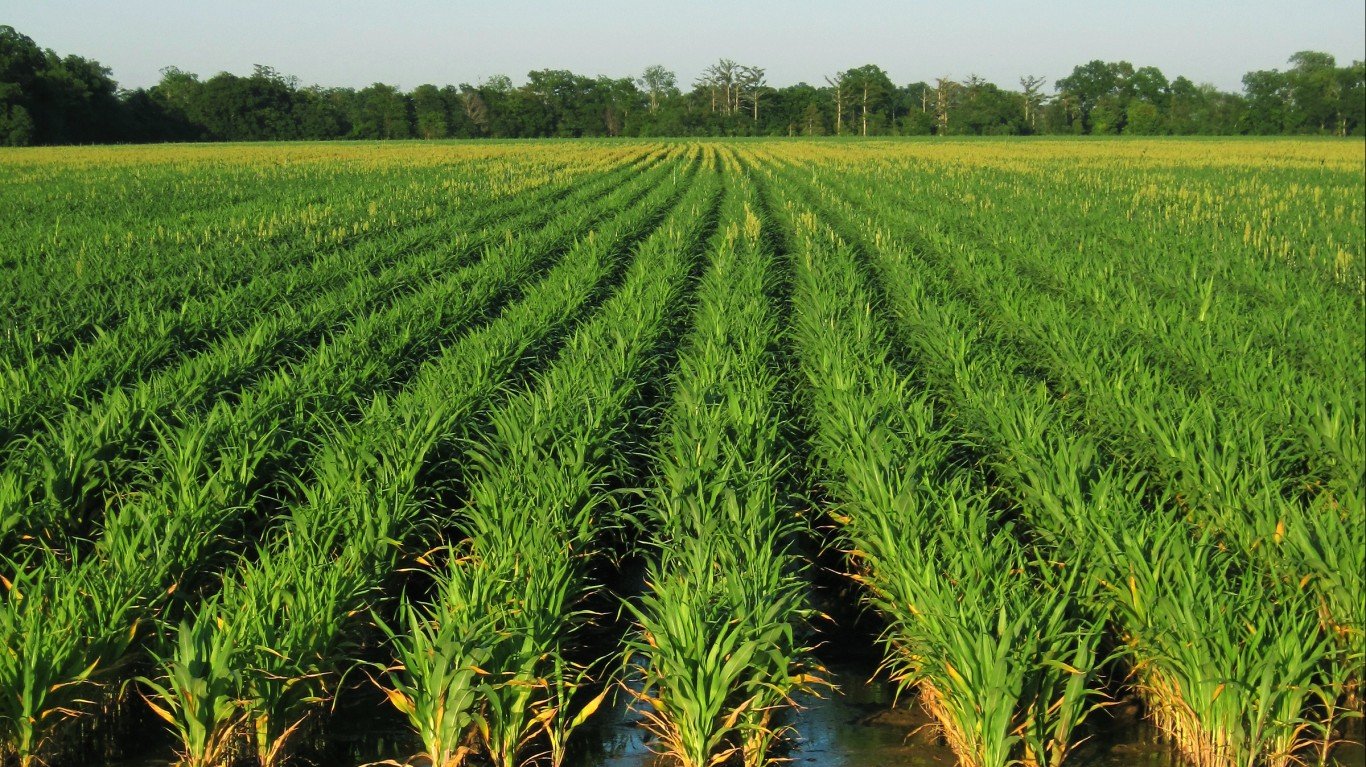
 24/7 Wall St.
24/7 Wall St.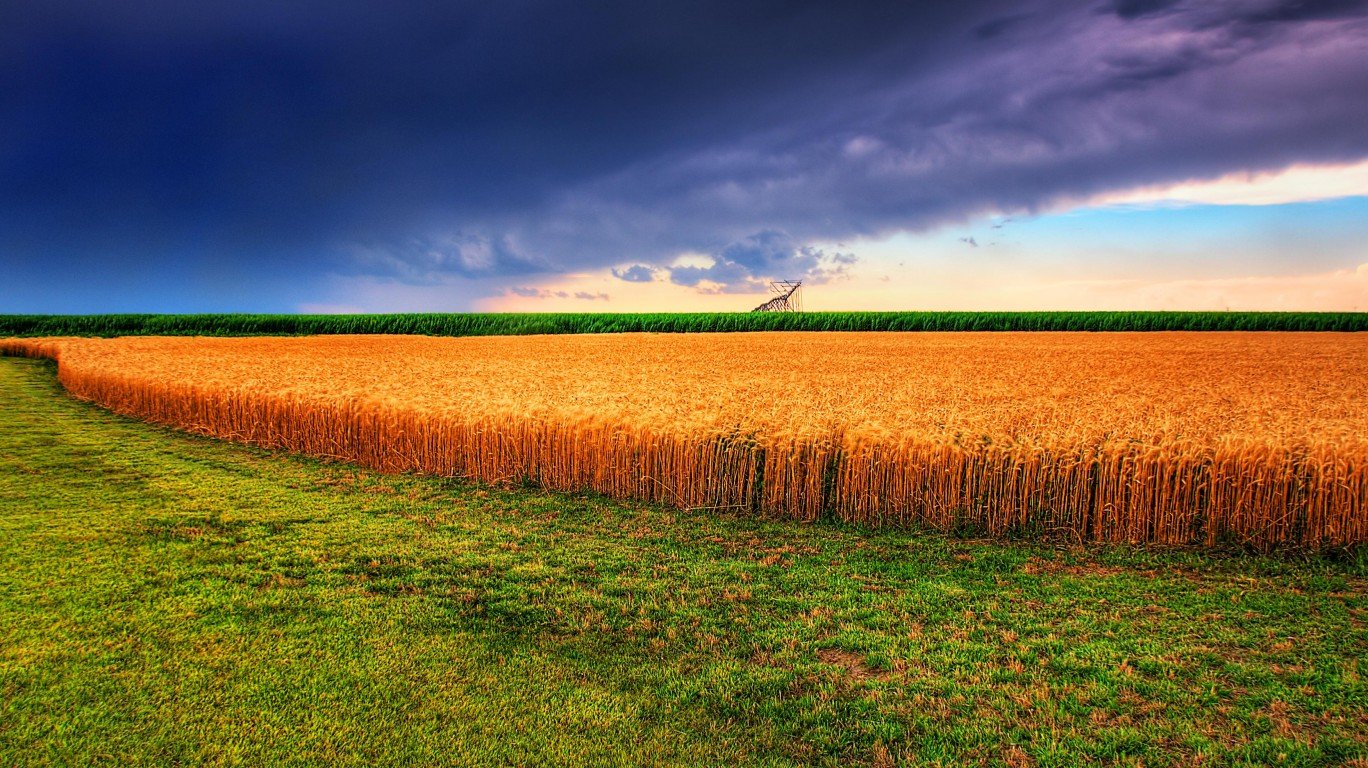

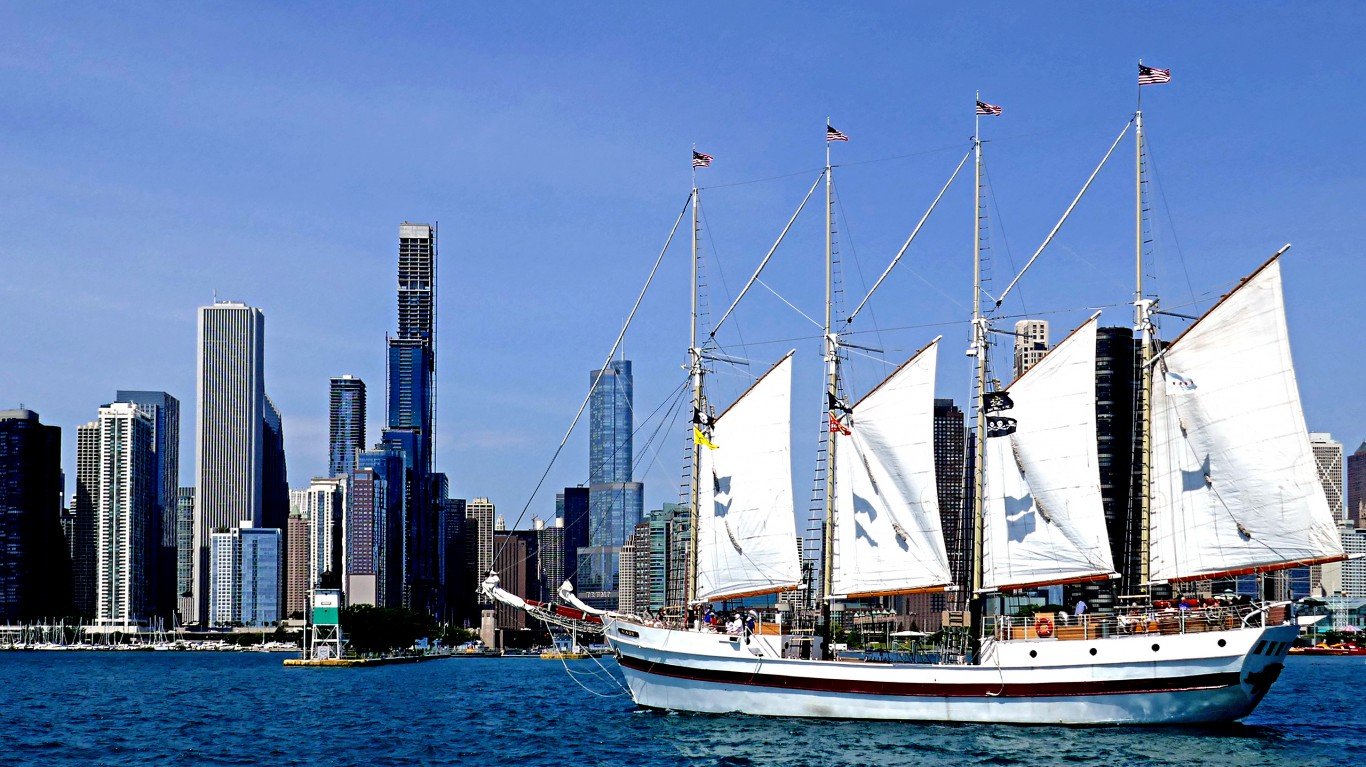
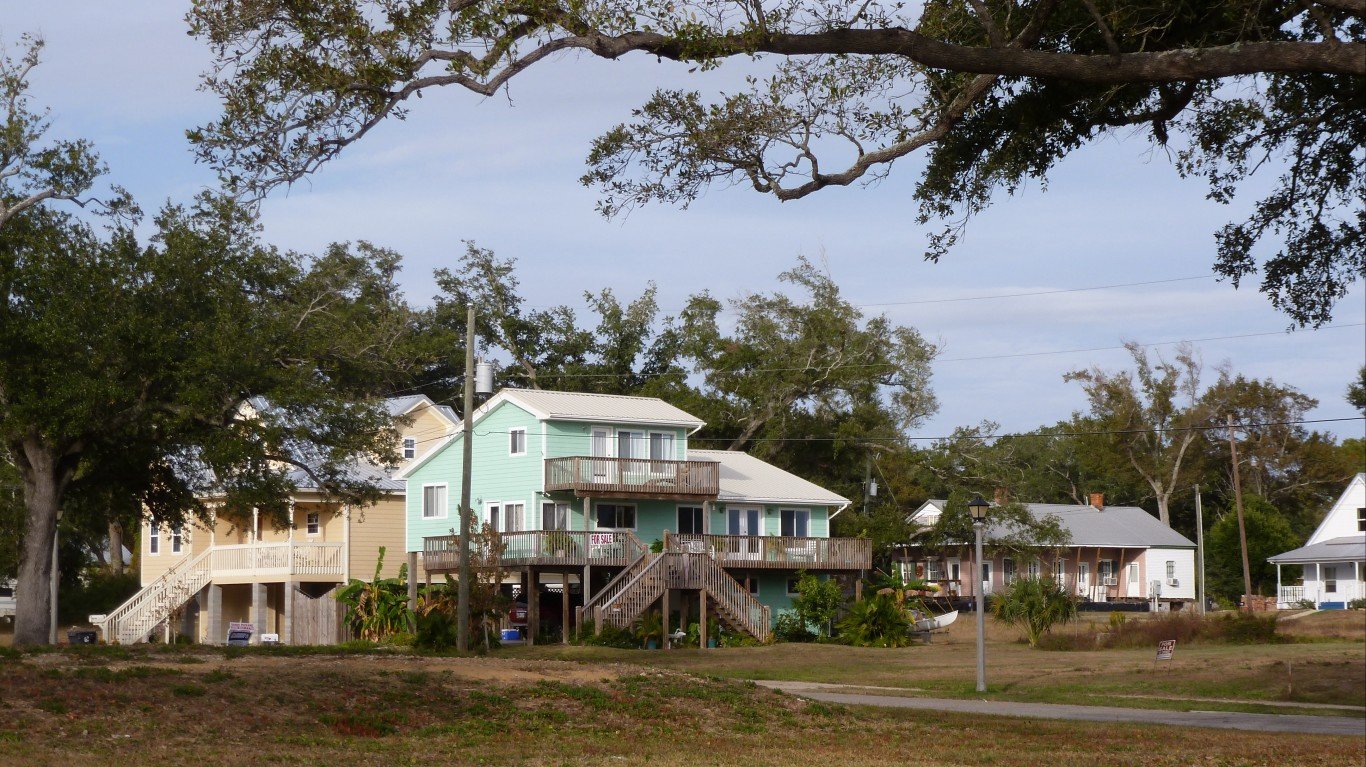

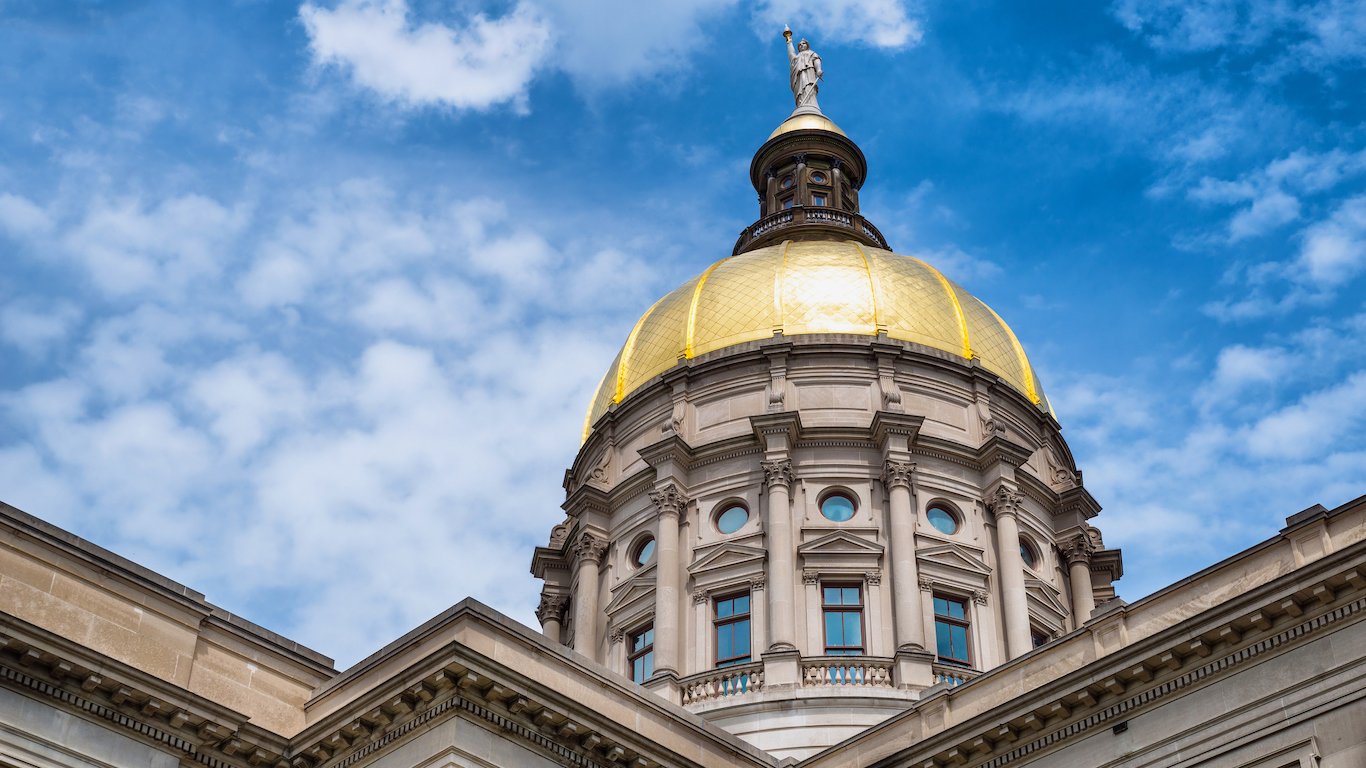 24/7 Wall St.
24/7 Wall St.